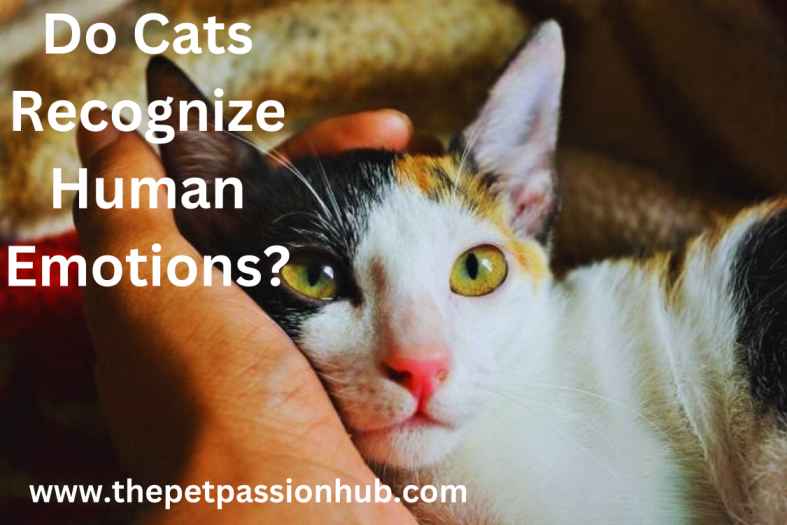Introduction
Cats have long been regarded as enigmatic creatures, capable of displaying both aloofness and affection in equal measure. But beyond their mysterious exterior lies a question that has fascinated pet owners for years. Can cats truly sense their owner’s pain?
This age-old inquiry delves into the realm of feline empathy. Prompting us to explore the depths of our furry companions’ emotional intelligence. While some may dismiss it as mere superstition, others swear by their cat’s uncanny ability to detect when something is amiss.
Join us as we unravel the truth about feline empathy. Uncover whether our beloved cats possess an innate sensitivity to human suffering or if it’s simply a figment of our imagination.
1. The Mysterious Connection Between Humans and Cats
The mysterious connection between humans and cats has long fascinated pet owners and researchers alike. Scientists have delved into the intuitive nature of felines. Seeking to understand the underlying reasons behind their empathetic behavior towards their human companions.
While some may dismiss this connection as mere anthropomorphism, studies have shown that cats can indeed pick up on subtle changes in human behavior and emotions.
In one study conducted at the University of Lincoln, researchers found that domestic cats were more likely to approach a person who was displaying a combination of crying and calling out for help compared to someone simply talking or humming.
This suggests that cats possess a degree of social cognition that enables them to respond to human distress signals in a similar way to human infants.
This intriguing finding highlights the depth of understanding between humans and their feline friends, shedding light on the inherently empathetic nature of these enigmatic creatures.
Another aspect of this unique bond lies in the role of oxytocin, often referred to as the love hormone. Which is released in both humans and animals during social bonding experiences.
Research has shown that when humans interact with their pets, including stroking or gazing into their eyes. Oxytocin levels increase in both species, creating a shared emotional connection.
This suggests that the strong bond between humans and cats is not only based on behavior. But also involves physiological mechanisms deeply rooted in our evolutionary history.
Do Cats Get Depressed After Abortion? (Uncovering the Truth)
2. Understanding Feline Behavior and Body Language
Understanding feline behavior and body language is essential for cat owners to interpret their pet’s emotions and needs accurately. Cats communicate primarily through body postures, vocalizations, and facial expressions.
A cat’s tail position can reveal about its mood – an upright tail generally signals a confident or content cat. While a low or tucked tail suggests fear or submission.
Understanding these subtle cues can help in creating an environment where cats feel safe and understood.
It’s intriguing to note that cats’ ability to sense pain may impact their behavior towards humans experiencing discomfort. Studies have shown that cats may pick up on subtle changes in our scent. And demeanor when we’re unwell or in pain.
This heightened sensitivity might lead them to exhibit more nurturing behaviors. Such as sitting closer than usual or purring in an effort to provide comfort.
While further research is needed to fully understand the depth of feline empathy. These observations shed light on the intricate ways our pets may respond to our emotional and physical states.
3. Do Cats Recognize Human Emotions?

It’s widely believed that cats are highly attuned to their human companions, but do they really recognize human emotions? Research suggests that cats can indeed sense human emotions, although not in the same way that humans perceive them.
While cats may not understand complex human emotions like sadness or joy. They can detect changes in their owners’ behavior and body language. This ability may allow them to provide comfort during times of distress. Showing a form of empathy unique to the feline species.
In fact, some studies have found that cats are more likely to approach and interact with a person. Who is crying or expressing sadness, indicating an awareness of emotional states.
While it’s tempting to attribute human-like empathy to our feline friends. It’s important to appreciate their unique approach to sensing emotions. Cats’ keen perception of tone of voice and facial expressions means they can pick up on subtle cues from humans. Allowing for a limited understanding of emotional states.
Rather than viewing these interactions through a purely anthropocentric lens. We can begin to grasp the depth of emotional connection between humans. And cats as something truly distinctive in the animal world.
Whether it’s recognizing discomfort or simply offering companionship in times of need. The bond between cats and their owners carries a quiet yet profound level of mutual understanding.
Can cats sense pain in humans?
4. Scientific Studies on Cat Empathy
Scientific studies have increasingly focused on unraveling the mysteries of cat empathy. Shedding light on the emotional intelligence of our feline companions.
Research published in the journal Animal Cognition suggests that cats possess a remarkable ability to understand and respond to human emotions.
By analyzing subtle behavioral cues and changes in their owners’ body language and tone of voice. Cats demonstrate an uncanny knack for emotional awareness.
Moreover, a study conducted at Oregon State University revealed that cats can form strong bonds with their owners. And display signs of empathy when they perceive distress or sadness.
This research challenges conventional notions of feline aloofness. Indicating that cats may be more attuned to human emotions than previously thought.
The findings suggest that understanding cat empathy requires a nuanced perspective. That acknowledges the depth of their emotional sensitivity and capacity for connection with humans.
5. Stories of Cats Comforting Their Owners
Stories of cats comforting their owners are abundant, offering heartwarming evidence of feline empathy and understanding.
One such story involves a woman who was battling depression and found solace in her cat, who would curl up next to her during her darkest moments, seemingly attuned to her feelings without the need for words.
Another remarkable tale recounts how a cat instinctively sensed its owner’s physical pain, refusing to leave their side as they recovered from surgery, providing unwavering support through silent companionship.
These stories highlight the remarkable ability of cats to engage in non-verbal communication with their owners and respond empathetically to human emotions.
Observing subtle changes in body language and behavior, cats have known to offer comfort and reassurance during times of distress or illness.
The deep bond between humans and their feline companions goes beyond words, demonstrating the profound impact of cat behavior on human well-being.
6. The Role of Olfactory and Physical Cues
The role of olfactory and physical cues in the human-cat emotional connection is often underestimated. Cats have an incredibly keen sense of smell, with 200 million odor-sensitive cells compared to a human’s 5 million.
This allows them to pick up on subtle changes in our pheromones that can signal stress or pain, forming a crucial part of their ability to empathize with us. Additionally, cats are highly attuned to physical cues such as body language and vocalizations.
They can detect changes in our posture, tone of voice, and facial expressions, enabling them to respond empathetically to our emotional state.
These olfactory and physical cues form the basis for the deep bond between humans and cats, allowing for a unique form of communication that transcends verbal language.
When we are in pain or distress, our feline companions may use these cues to provide comfort through cuddling, purring, or simply staying close by.
Understanding the significance of these cues in the human-cat relationship sheds light on the depth of feline empathy and their ability to recognize and respond to our emotional needs in times of distress.

7. Conclusion: Exploring the Complex Bond Between Cats and Humans
In conclusion, the complex bond between cats and humans goes beyond simple companionship. Studies have shown that cats have a unique ability to sense their owners’ emotions and even detect pain.
Whether it’s through subtle cues or a heightened sensitivity to human body language, these feline friends often provide comfort and solace during difficult times.
Moreover, the reciprocal nature of this bond cannot overstate. While cats may possess an innate ability to detect pain in their owners, our understanding of their emotional depth also influences our interactions with them.
Embracing the multifaceted nature of this connection allows us to appreciate the profound impact that cats can have on our well-being. In exploring this complex bond, we gain a deeper appreciation for the silent but significant role that cats play in our lives as empathetic companions who are attuned to our needs.
FAQs
Q1: Can cats really sense when their owners are in pain?
A1: Yes, cats have been known to pick up on their owner’s distress and respond with empathy.
Q2: How do cats show empathy towards their owners?
A2: Cats may exhibit comforting behaviors such as purring, kneading, or staying close to the person in pain.
Q3: Do all cats have the ability to sense human pain?
A3: While not all cats may display empathetic behavior, many have shown a remarkable ability to understand and respond to their owner’s emotions.
Q4: What signs should I look for to know if my cat is sensing my pain?
A4: Watch for changes in your cat’s behavior such as increased affection, seeking physical contact, or being more attentive than usual.
Q5: Can cats help alleviate emotional pain in humans?
A5: Some studies suggest that the presence of a cat can reduce stress and improve mood, which can indirectly help with emotional pain.
Q6: Are there any scientific studies supporting the idea of feline empathy?
A6: Yes, several studies have documented instances where cats demonstrate an understanding of human emotions and provide comfort during times of distress.
Q7: Can cats also sense physical pain in humans?
A7: There are anecdotal reports of cats showing concern or attentiveness towards areas of their owner’s body that are experiencing physical discomfort.
Q8: Is there anything I can do to encourage my cat’s empathetic behavior?
A8: Creating a strong bond with your cat through regular interaction and care can foster a deeper understanding between you and may lead to increased empathetic responses.
